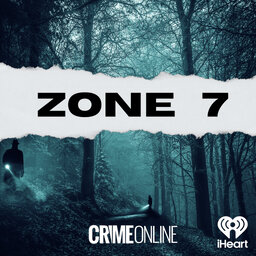Inside Some of Laura Ingle’s Most Unforgettable Cases | From Tupac to the Long Island Serial Killer
In this episode of Zone 7, Crime Scene Investigator, Sheryl McCollum, welcomes distinguished street-level journalist, Laura Ingle back to Zone 7 to discuss the realities of “boots on the ground” reporting. Laura shares stories from her career covering high-profile cases like the Scott Peterson trial, the Long Island Serial Killer, and the Miracle on the Hudson. Sheryl and Laura also tease her upcoming podcast, The Ingle Edit, a platform to share untold stories and in-depth reporting from her decades-long career.
Laura Ingle is an investigative reporter who has covered the Peterson case from the beginning. She reports for Fox News and NewsNation. Ingle received an Edward R. Murrow award in 2005 for her 2004 Scott Peterson trial coverage and was awarded four Golden Mikes from the Southern California Association of Television and Radio News Directors.
Listeners can learn more about Laura on X @lauraingle and IG @lauraingletv
Show Notes:
-
(0:00) Welcome back to Zone 7 with Crime Scene Investigator, Sheryl McCollum
-
(1:00) Sheryl welcomes Laura Ingle back to Zone 7
-
(2:00) The challenges of “boots on the ground” reporting
-
(5:00) Covering the Trump trial
-
(12:15) Miracle on the Hudson
-
(14:30) Long Island Serial Killer (LISK)
-
(20:00) The Ingle Edit: Laura’s new podcast
-
(24:00) Revisiting the Scott Peterson case
-
(26:45) Retracing the steps of Rachel Morin
-
(30:00) Revisiting Tupac’s shooting
-
(35:00) Power in a support system
-
(36:00) ”And, you know, sometimes if you, if you doubt yourself and you've got somebody that believes in you, it pushes you on to that next level.”
-
(36:30) ”The profession of journalism ought to be about telling people what they need to know, not what they want to know.” -Walter Cronkite
-
Thanks for listening to another episode! If you’re loving the show and want to help grow the show, please head over to Itunes and leave a rating and review!
---
Sheryl “Mac” McCollum is an Emmy Award winning CSI, a writer for CrimeOnLine, Forensic and Crime Scene Expert for Crime Stories with Nancy Grace, and a CSI for a metro Atlanta Police Department. She is the co-author of the textbook., Cold Case: Pathways to Justice. Sheryl is also the founder and director of the Cold Case Investigative Research Institute, a collaboration between universities and colleges that brings researchers, practitioners, students and the criminal justice community together to advance techniques in solving cold cases and assist families and law enforcement with solvability factors for unsolved homicides, missing persons, and kidnapping cases.
Social Links:
-
Email: coldcase2004@gmail.com
-
Twitter: @ColdCaseTips
-
Facebook: @sheryl.mccollum
-
Instagram: @officialzone7podcast
 Zone 7 with Sheryl McCollum
Zone 7 with Sheryl McCollum


